BOX HILL CEMETERY COLUMBARIUM AND MYER MEMORIAL
395 MIDDLEBOROUGH ROAD BOX HILL, WHITEHORSE CITY
-
Add to tour
You must log in to do that.
-
Share
-
Shortlist place
You must log in to do that.
- Download report


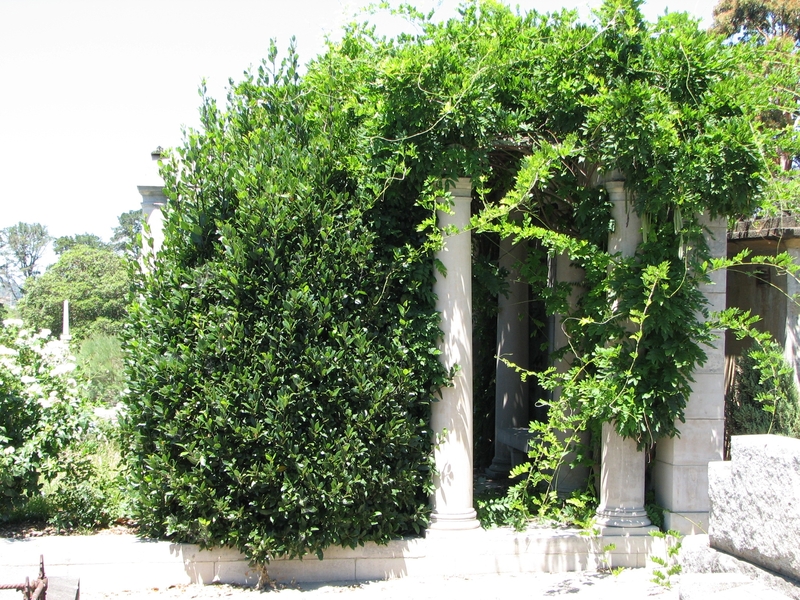
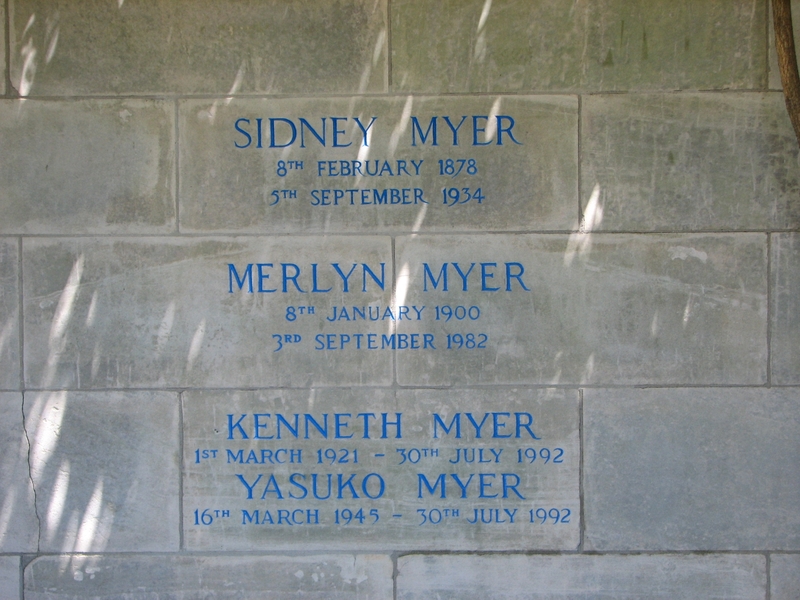
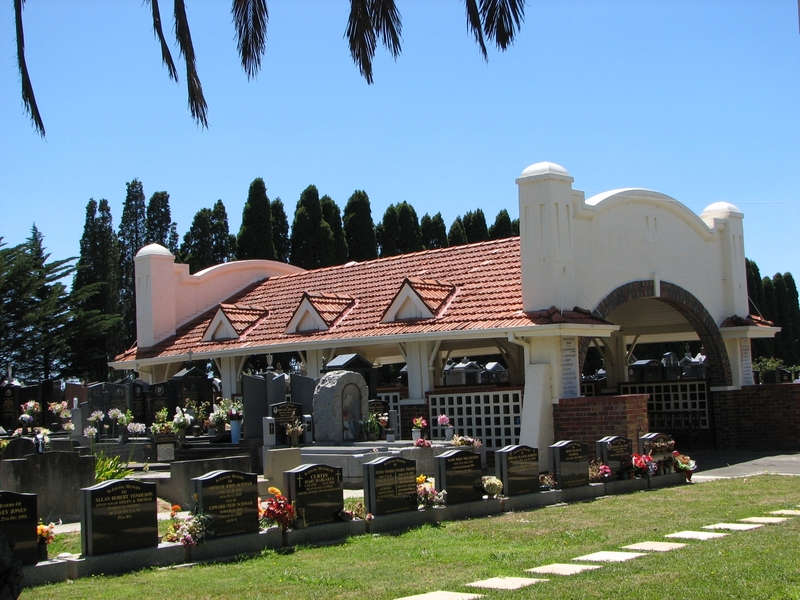
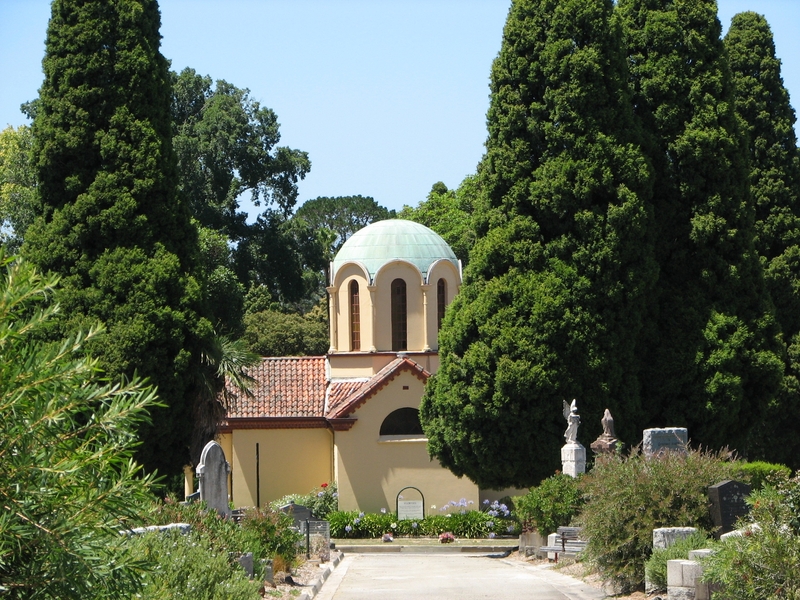
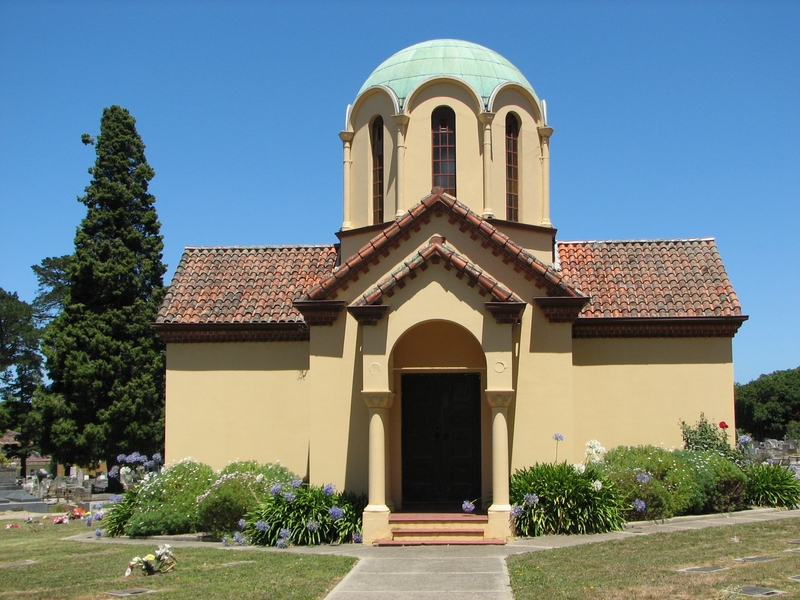
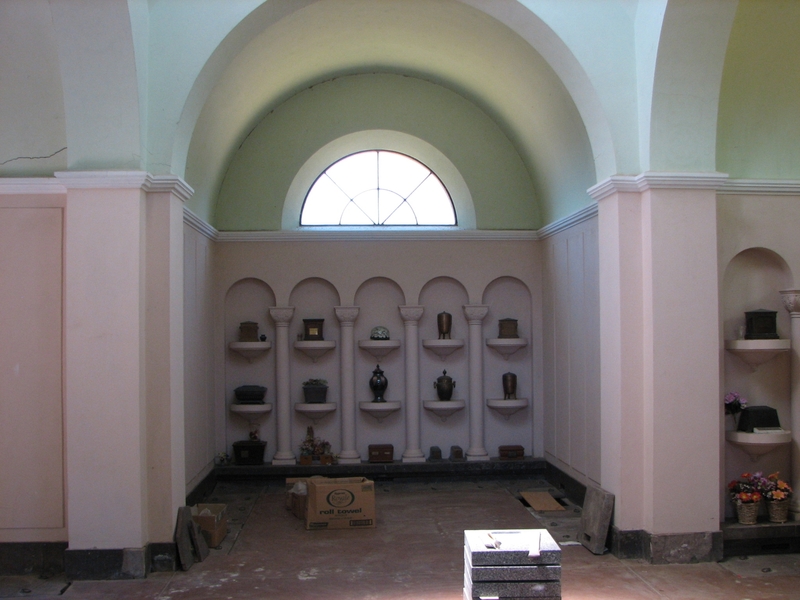
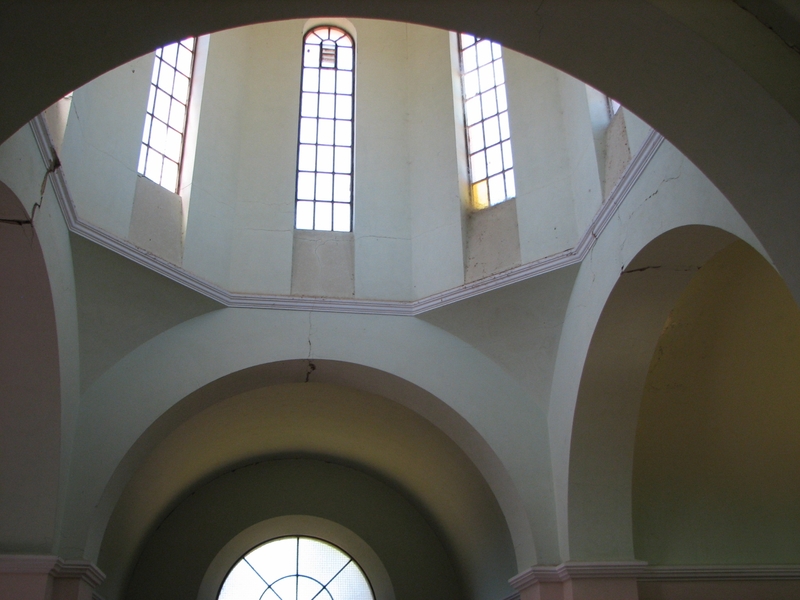



Statement of Significance
What is significant?
Box Hill Cemetery, first gazetted in 1873, was extended twice in Victorian times and had a substantial 1935 addition to the cemetery grounds. The two most highly significant elements within the cemetery are the columbarium and the Sidney Myer memorial.
The word columbary derives from Latin "columba" meaning dove, a columbarium being a dovecote or underground vault with recesses in the walls to receive the ashes of the dead. In the 1920s the Box Hill Cemetery Trust defined it as a subterranean sepulchre set apart for the reception of urns of ashes. Whilst cremation was made legal in Victoria in 1903, only 10% of Victorians who died in the 1930s were being cremated. Following permission from the Health Department in 1928, the columbarium was erected in 1929 to a design by architects Rodney Alsop and A Bramwell Smith, who, it was claimed, sought to evoke the vista of the tomb of Galla Placidia at Ravenna.
Located at the centre of a system of radial pathways, the columbarium is in the style of a Byzantine church and is constructed of rendered brick. Entrance is via a gabled porch, through bronze doors. The Greek cross plan has a small octagonal tower at the crossing, with copper sheathed cupola, and the arms of the building are roofed in Cordovan tiles. Light is admitted by lunette windows in the gable ends of the arms. Niches and recesses in the walls are for storing urns, and caskets are buried in a chamber in the concrete floor. The ceilings were originally painted with gold stars on a sky-blue background.
Sidney Myer was born in Russia in 1878, migrated to Australia in 1894 and made his fortune, founding the Myer Emporium. He died in 1934. The Myer memorial was designed by the internationally renowned British architect Edwin Lutyens, in association with Melbourne architects Yuncken, Freeman, Freeman and Griffiths. Lutyens had been involved with work on the Myer residence "Cranlana". The memorial is a large elevated plot approached from the east by steps leading to a central lawn flanked by flower beds. The altar stone is simply inscribed "Sidney Myer" and is approached through an open pergola composed of Tuscan order columns of Stawell sandstone and timber cross beams. Also interred are Myer's second wife, Merlyn, and the ashes of their son Kenneth and his second wife.
How is it significant?
The columbarium and Myer memorial are of historical, aesthetic, social and architectural significance to the State of Victoria.
Why is it significant?
The columbarium is historically significant as an early and unusual means of storing cremated human remains at a time when cremation remained a minority practice. It is believed to be the only example of its kind in Victoria.
The columbarium is architecturally and aesthetically significant as a wonderfully august and refined example of the Byzantine style, and evokes the early Christian church. The building was designed to terminate vistas along narrow avenues of trees, and give the landscape a strong visual focus.
The Myer memorial is of aesthetic significance as an austere but elegant memorial with unusual integration of planting into the design. It has historical significance as one of only two memorials in Victoria designed by the eminent architect Edwin Lutyens. The memorial has social significance for its association with one of the greatest Australian businessmen and philanthropists of the twentieth century.
-
-
BOX HILL CEMETERY COLUMBARIUM AND MYER MEMORIAL - History
From National Trust Nomination
History
Box Hill was an agricultural area until the railway line went through in 1882, creating rapid urban development. After World War One, the Temperance Movement was strong in Box Hill and, along with Camberwell, it delicenced local hotels. Box Hill has remained a 'dry area' and now is middle class with an older population. It is a centre for education and has a significant Asian population.
The Box Hill Cemetery dates from 1873 and was extended twice in Victorian times. From 1916 until 1929, improvements led to the construction of the gates to Whitehorse Road, Rutland Road and Sanders Road; two shelters; the office; timber sheds; the archway and finally the columbarium. This was followed in 1935 by a substantial addition to the cemetery grounds and an extensive planting program.
Chronology
The dates are taken from the Box Hill Historical Society History and records held on the Health Dept. files
1873 -29 August, 4 hectares (10 acres 2 roods 0 perches) gazetted
- first burial 30 August, Lavinia Smith, a 3 week old child (commemorated by a memorial stone erected by the Historical Society)
1877 -12 January, additional 0.8 hectares (2 acres 1 rood 0 perches) gazetted
1886 -28 May, additional 1.2 hectares (3 acres 1 rood 34 perches) gazetted after the railway line was extended to Lilydale; a wooden bridge was erected over the line and remained until the 1920s; this area of the cemetery is still known as the 'New Survey'
1887 -timber buildings including a clergy room & ladies lounge constructed (now demolished)
1916 -construction of main gates at Whitehorse Road designed by Melbourne architects, Ainsworth and Williams at a cost of 155 pounds (extant)
1918 -construction of Rutland Road gates (removed and replaced in the 1960s)
1919-20 -shelter built inside Whitehorse Road gates for 200 pounds (extant -altered)
1920s -construction of the Sanders Road gates and adjacent shelter, the office and sheds
1923 -the Archway leading from the railway line to the office was built for 425 pounds with the names of the original Trustees and the 1922 Trustees listed (Other Trustees are now also listed. The Archway was substantially altered with the addition of cremation boxes in the interior in recent years)
1929 -Columbarium constructed (extant)
1935 -24 July, additional 5.6 hectares (14 acres 2 roods 27 perches) gazetted
1979 -3rd September, due to declining funeral numbers and increased rail traffic, the gates were closed and the main cemetery entrance relocated to Middleborough Road. All land occupied by the cemetery avenue was transferred to the City of Box Hill, and now forms part of the adjoining recreation area.
Significant burials[
This list has been compiled from the local historical society's walking tour notes, and research by Helen Harris. It is not comprehensive as every burial record has not been surveyed and assessedNote that where the name is followed by an asterisk, the memorial itself is also significant (as well as what it commemorates) and included on the list in this report. Many other burials of local significance have been identified by the Box Hill Historical Society.
ANGLISS, Sir William; businessman, philanthropist
BOROVANSKY, Edouard; involvement in ballet.
CALLISTER, Cyril; inventor of Vegemite.
DENNIS C J -poet; two plaques in double plot. The first records The Sentimental Bloke, 1876 -1938. Erected by Box Hill City Historical Society on 50th Anniversay of the death of C.J. Dennis and includes a quote from 'the Sentimental Bloke'. The second was unveiled on the one hundred year anniversary of his birth and states: C.J. Dennis (Den) 'Now is the healing quiet hour that fills this gay green world with peace and grateful rest'. 'The Singing Garden'.
HESTER, Joy; artist (unmarked grave) Sunday Herald Sun, 21 July 1996, p 17
HYETT, Frank; unionist
MYER MEMORIAL * ; Sidney Myer founded the Myer Emporium & his wife, Kenneth Myer & his second wife, both died in 1992 in an aeroplane crash in Alaska, part of their ashes are within this plot
SLEIGH, Harold Crofton; ship owner, merchant, established H. C. Sleigh Ltd
TALLIS, Sir George; managing director of J. C. Williamson
The inscription plaque on the gates in Whitehorse Road states:
The Box Hill Cemetery was opened in 1873. The first cemetery fence and gates were erected near this location. Built by Mr. Robert Sutton, an early Box Hill pioneer, blacksmith and cemetery trustee, they provided the main entry to the site via the cemetery avenue. Construction of the present gates occurred in 1916, designed by Melbourne architects, Ainsworth and Williams. On 3rd September 1979, due to declining funeral numbers and increased rail traffic, the gates were closed and the main cemetery entrance relocated to Middleborough Road. All land occupied by the cemetery avenue was transferred to the City of Box Hill, and now forms part of the adjoining recreation area.
BOX HILL CEMETERY COLUMBARIUM AND MYER MEMORIAL - Permit Exemptions
General Exemptions:General exemptions apply to all places and objects included in the Victorian Heritage Register (VHR). General exemptions have been designed to allow everyday activities, maintenance and changes to your property, which don’t harm its cultural heritage significance, to proceed without the need to obtain approvals under the Heritage Act 2017.Places of worship: In some circumstances, you can alter a place of worship to accommodate religious practices without a permit, but you must notify the Executive Director of Heritage Victoria before you start the works or activities at least 20 business days before the works or activities are to commence.Subdivision/consolidation: Permit exemptions exist for some subdivisions and consolidations. If the subdivision or consolidation is in accordance with a planning permit granted under Part 4 of the Planning and Environment Act 1987 and the application for the planning permit was referred to the Executive Director of Heritage Victoria as a determining referral authority, a permit is not required.Specific exemptions may also apply to your registered place or object. If applicable, these are listed below. Specific exemptions are tailored to the conservation and management needs of an individual registered place or object and set out works and activities that are exempt from the requirements of a permit. Specific exemptions prevail if they conflict with general exemptions. Find out more about heritage permit exemptions here.Specific Exemptions:General Conditions: 1. All exempted alterations are to be planned and carried out in a manner which prevents damage to the fabric of the registered place or object. General Conditions: 2. Should it become apparent during further inspection or the carrying out of alterations that original or previously hidden or inaccessible details of the place or object are revealed which relate to the significance of the place or object, then the exemption covering such alteration shall cease and the Executive Director shall be notified as soon as possible. General Conditions: 3. If there is a conservation policy and plan approved by the Executive Director, all works shall be in accordance with it. General Conditions: 4. Nothing in this declaration prevents the Executive Director from amending or rescinding all or any of the permit exemptions. General Conditions: 5. Nothing in this declaration exempts owners or their agents from the responsibility to seek relevant planning or building permits from the responsible authority where applicable.General:
* Interments, burials, reuse of graves, burial of cremated remains, and exhumation of remains in accordance with the Cemeteries Act 1958, and amendments.
* Any necessary works for stabilisation or repair of Myer memorial
* Emergency and safety works to secure the site, and prevent damage and injury to property and the public.
* Monument works undertaken in accordance with Australian Standard, Headstones and Cemetery Monuments AS 4204.*Maintenance of roads and paths and gutters
* Painting of previously painted structures provided that preparation or painting does not remove evidence of the original paint or other decorative scheme.BOX HILL CEMETERY COLUMBARIUM AND MYER MEMORIAL - Permit Exemption Policy
The Columbarium is managed by the Box Hill Cemetery Trustees and the Myer memorial is the responsibility of the next-of-kin of Sidney Myer, who have a burial right to the plot inperpetuity.
The permit exemption policy takes account of the ongoing use of the Columbarium for storing of urns, and the Myer memorial for burials.
The purpose of the permit exemptions is to allow works that do not impact on the significance of the place to occur without the need for a permit. Repairs and maintenance, and workswhich replace like materials with like are permit exempt. Repairs, and replacement of like for like materials do not require a permit. General maintenance to the Columbarium does not require a permit.
-
-
-
-
-
WILLIS PIPE ORGAN
 Victorian Heritage Register H2156
Victorian Heritage Register H2156 -
COLLINGS HOUSE
 Victorian Heritage Inventory
Victorian Heritage Inventory -
Albion
 National Trust
National Trust
-
'YARROLA'
 Boroondara City
Boroondara City -
1 Bradford Avenue
 Boroondara City
Boroondara City
-
-











